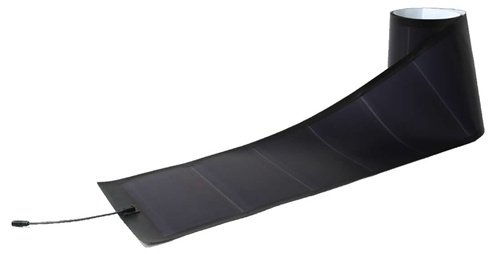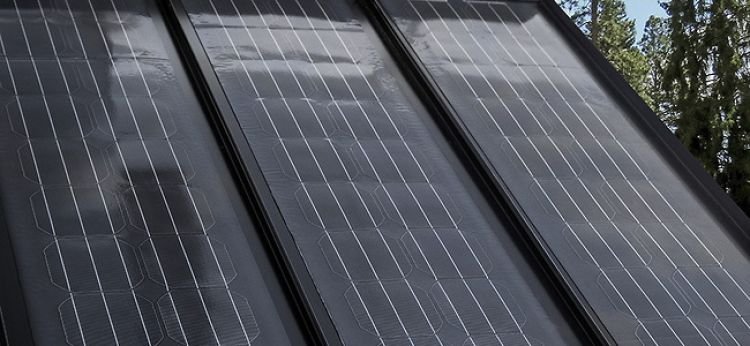
Thin film solar cells are flexible, can be easily integrated with buildings and are often used on house rooftops. They are a cost-effective choice and are often priced at 15-20% less than their crystalline counterparts. They do however produce less power per square meter, but that should not be a problem for people with enough room to spare on their rooftops to make up for the difference.
Thin film cells are so thin that they are 1/100 of the thickness of a human hair. Thin film solar cells are not made from “crystalline” silicone of any kind and therefore are very flexible! They are made of non-crystalline silicone, also called “amorphous,” which makes a total of 10-20% of the market share today and is proving to be worth the investment.
Thin film solar cells come in rolls and are perfect for metal roofs. They have a small layer of plastic on the backside which can be ripped off, exposing a sticky, adhesive layer that can be attached to the surface, where you want this solar cell to be. Just pull of the plastic and roll in onto the surface and it will “glue” itself onto it, they will look like they are a part of the roof right away!
Some of the advantages and disadvantages of amorphous/thin film solar cells are:
1. Efficiency
They have an efficiency per square meter that is rated at about half of that of poly or monocrystalline solar cells. This means that you need twice that much to produce the same amount of power.
Lower efficiency is because the thin layer of amorphous silicon they are made of have harder time catching the sun’s rays. They however cost 15-20% less per watt. This means that if you have enough room to spare, you can get your return on investment faster.
Read more detailed information about different solar panels efficiency in this article from Greentumble.
2. Shade
The thin film cells offer the best option for shaded and low light conditions, because their efficiency drops proportionally to the amount of sunlight the surface receives.
So, if you get 20% less sunlight due to the shading of the cells you get 20% less power.
3. Cost
The cost per watt is usually better than other technologies offer, but be sure to make a fast calculation of your energy consumption cost and price your manufacturer gives.
The good news is that the price of this technology is expected to even further decrease. Here is a good article explaining the latest development of the thin-film market: "Thin-film solar production to collapse to seven-year low in 2017."
The reliability of these panels may however be a little lower than crystalline solar panels, they are a new kind of technology and have not been tested for a long time enough.

4. Flexibility and portability
They are flexible, which makes them very portable and easy to install and use, if you want to have your solar system installed at remote location, carrying these lightweight panels that don’t have the problem of shattering or breaking as their crystalline counterparts is the best idea.
5. Installation
The thin-film option is perhaps the best choice if you have a large roof and want easy installation. All you have to do is to roll out the cells and let the glue underneath “stick” to the surface. They come at a lower cost than crystalline panels, are flexible and won’t break or shatter if handled roughly.
I think thin solar films are the future. Imagine the diverse range of applications, it makes it easier, cheaper and more practical in different situations.
Yes, absolutely - very practical. Although the problem at the moment is with their low efficiency.